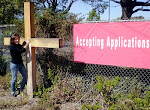John 1:43-51 Jesus decided to go to Galilee. He found Philip and said to him, “Follow me.” Now Philip was from Bethsaida, the city of Andrew and Peter. Philip found Nathanael and said to him, “We have found him about whom Moses in the law and also the prophets wrote, Jesus son of Joseph from Nazareth.” Nathanael said to him, “Can anything good come out of Nazareth?” Philip said to him, “Come and see.” When Jesus saw Nathanael coming toward him, he said of him, “Here is truly an Israelite in whom there is no deceit!” Nathanael asked him, “Where did you get to know me?” Jesus answered, “I saw you under the fig tree before Philip called you.” Nathanael replied, “Rabbi, you are the Son of God! You are the King of Israel!” Jesus answered, “Do you believe because I told you that I saw you under the fig tree? You will see greater things than these.” And he said to him, “Very truly, I tell you, you will see heaven opened and the angels of God ascending and descending upon the Son of Man.”
Reflection Long before becoming a priest while in training to be a spiritual director one of the faculty members, an Episcopal priest whom I shall call Sharon, told the story of her childhood religious experience. Her earliest memories were walking with her grandmother every morning to Roman Catholic mass, fastening a white lace doilie onto her curly black hair, holding her breath to keep the scent of incense inside, knowing she loved Jesus and he loved her right back. I listened politely while rolling the eyes of my heart.
Recounting my early religious experience went like this. I was four years young, sitting on the floor in the Presbyterian Church nursery, watching a lady assemble felt figures on a board. Glued to her every word, when the lady placed Jesus on the pointy tips of waves somewhere between a beach and a boat my pudgy hand popped up as my exclamation popped out, “He cannot walk on water. I know because my family goes to the beach.” Silence told me I did something wrong, a fact affirmed when the Sunday school teacher informed my parents of my misdemeanor who punished me for being disrespectful. The following Sunday I was placed with older children and never spoke again. One thing I knew for sure, nothing good could come out of those stories about Jesus.
Which brings us to the story of Jesus’ visit to Galilee. Philip’s immediate receptivity not only to follow Jesus but also to enlist Nathaneal to do likewise makes me think of Sharon’s unsuspicious acceptance of Jesus and her enthusiasm to bring me along. On the other hand, Nathaneal’s skeptical reaction to Philip’s invitation to follow Jesus, “Can anything good come out of Nazareth?” sounds more like my inclination to hesitate, question and resist following. It is the next exchange between Jesus and Nathaneal that turns me around.
Immediately after Nathaneal lays down his hesitating hand,“Can anything good come out of Nazareth?” Jesus sees Nathaneal. What Jesus ‘sees’ is more than Nathaneal’s skepticism. When Jesus says, “Here is truly an Israelite in whom there is no deceit!” he affirms Nathaneal’s hesitation, questioning and reluctance to follow and thereby creates an opportunity for Nathaneal to engage. Without judgment Jesus ‘sees’ Nathaneal exactly where he is, which in this teaching tale is represented by the fig tree.
There must have been a fig tree in God’s garden because Adam and Eve made the first fashion faux pas using its leaves. (Gen 3.7) The prophets Hosea (9.10) and Jeremiah (24) liken the people of God to figs on a fig tree. Micah, one of the twelve minor prophets in the Hebrew Testament, calls for a world at peace lead by a new king in the line of David. Describing this new world Micah uses the imagery of men sitting under their fig trees without fear. (Micah 4.4)
So what is the writer of John’s gospel doing when he has Nathanael ask Jesus, “Where did you get to know me?” and Jesus answers, “I saw you under the fig tree before Philip called you?” I believe he is offering us a new page for our playbooks. Jesus shows us a non-defensive, non-combative way to invite people who are skeptical or judgmental about our beliefs or our affiliations to engage with us.
Imagine if like Jesus, instead of leaping to defend ourselves or our position when someone questions or criticizes our social, political or religious perspective, what if we responded as does Jesus? “I see you, an Israelite, a Republican, Democrat, pacifist, activist, fundamentalist, progressive, centrist, I see you under your fig tree. I affirm you wanting to be seen and counted. I see you as you are, seeking security, safety and esteem. ” Might ‘those people’ whom we have cast into the camp of other be willing to “come and see,” to engage with us and ‘see’ us too?
We, the people, are not enemies. We are as figs on a sole fig tree in the garden of God. Figs in every stage of ripe and readiness, figs reaching through the rare tree’s roots for our livelihood, figs turning toward the sun for our affirmation.
God inhabits every cell and every space of our being and loves us, anyway. This is the sure source of our safety, security and esteem even when we hesitate, question and resist. Come and see.
If you find this post to be meaningful please share by clicking on icons below. Thank you.



